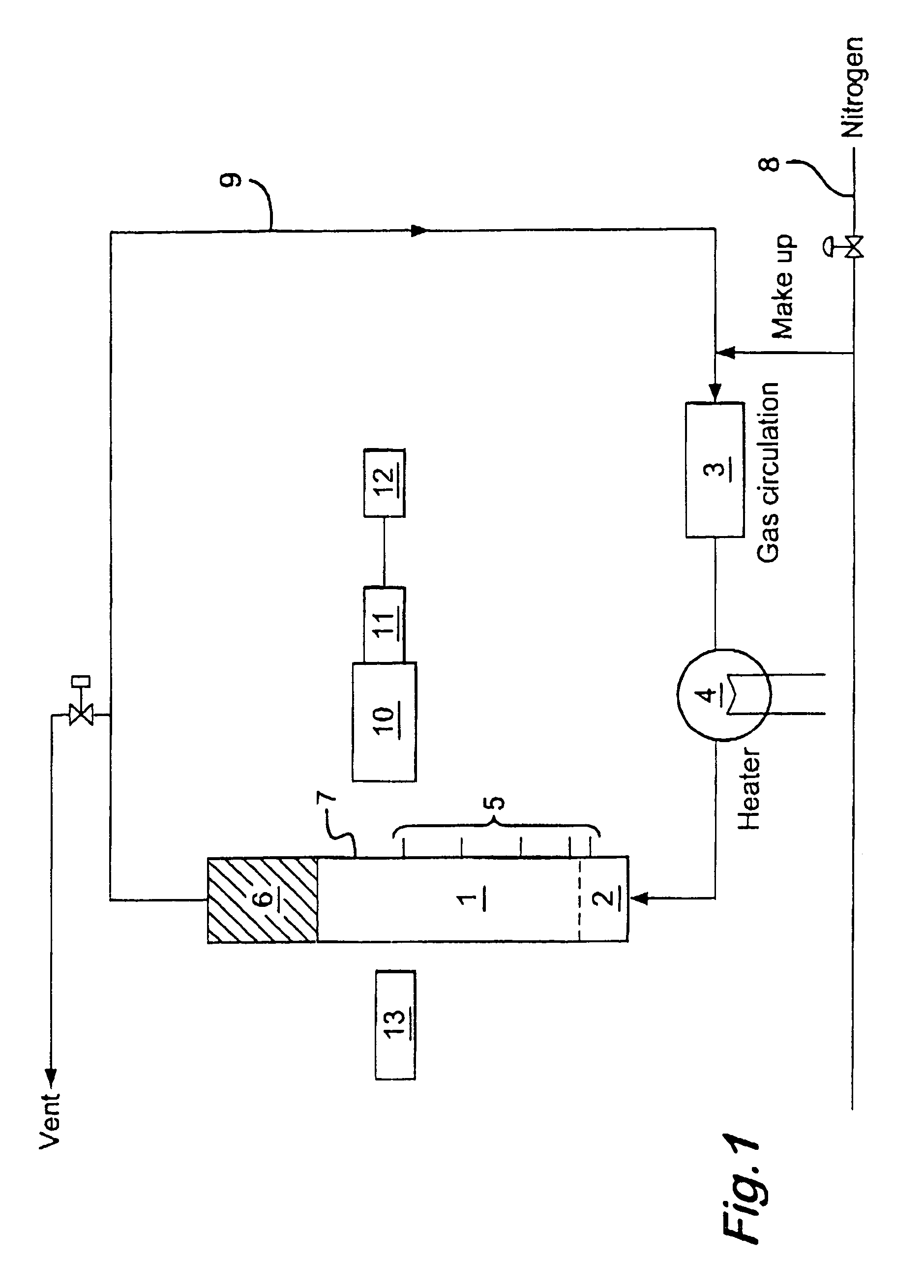Oxidation process in fluidized bed reactor
a fluidized bed reactor and oxidation process technology, applied in the direction of carboxylic compound preparation, organic chemistry, chemical production, etc., can solve the problem of general lack of distinction between continuous and discontinuous phases in the bed
- Summary
- Abstract
- Description
- Claims
- Application Information
AI Technical Summary
Benefits of technology
Problems solved by technology
Method used
Image
Examples
example 1
Comparative
[0091]The support was prepared by spray-drying a mixture of Nalco (Nalco Chemical Company) silica sol 1060 and Degussa (Degussa Chemical Company) Aerosil® silica. In the dried support, 80% of the silica came from the sol and 20% of the silica came from the Aerosil. The spray-dried microspheres were calcined in air at 640° C. for 4 hours. This method of support preparation is described in EP-A-0672453.
example 2
[0092]The support was prepared as in Example 1 except that 90% of the silica came from the sol and 10% came from the Aerosil.
example 3
[0093]The support was prepared as in Example 2 except that the Aerosil was replaced by tin oxide.
[0094]The particle size distributions of the supports are as follows:
[0095]
Particle size% Example 1% Example 2% Example 3>350microns0.80.3088–350microns27.415.112.540–88microns33.831.531.5microns38.053.156.0
b) Preparation of Catalyst
[0096]30.0 g of microspheroidal support was impregnated with a solution of Na2PdCl4.xH2O (1.84 g, 28.9% Pd) and HAuCl4.xH2O (0.44, 49.0% Au) in distilled water (20.0 cm3) by incipient wetness. The resulting mixture was mixed thoroughly, left to stand for 1 hour and then dried overnight.
[0097]The impregnated material was allowed to cool to room temperature, and then was added to a solution of hydrazine (3.0 g of a 55% aqueous solution of N2H4) in 80.0 cm3 distilled water, and the mixture allowed to stand overnight with occasional stirring. Thereafter the mixture was filtered and washed with 4×250 cm3 distilled water. The solid was then dried overnight.
[0098]Th...
PUM
| Property | Measurement | Unit |
|---|---|---|
| particle diameter | aaaaa | aaaaa |
| particle diameter size distribution | aaaaa | aaaaa |
| particle diameters | aaaaa | aaaaa |
Abstract
Description
Claims
Application Information
 Login to view more
Login to view more - R&D Engineer
- R&D Manager
- IP Professional
- Industry Leading Data Capabilities
- Powerful AI technology
- Patent DNA Extraction
Browse by: Latest US Patents, China's latest patents, Technical Efficacy Thesaurus, Application Domain, Technology Topic.
© 2024 PatSnap. All rights reserved.Legal|Privacy policy|Modern Slavery Act Transparency Statement|Sitemap



